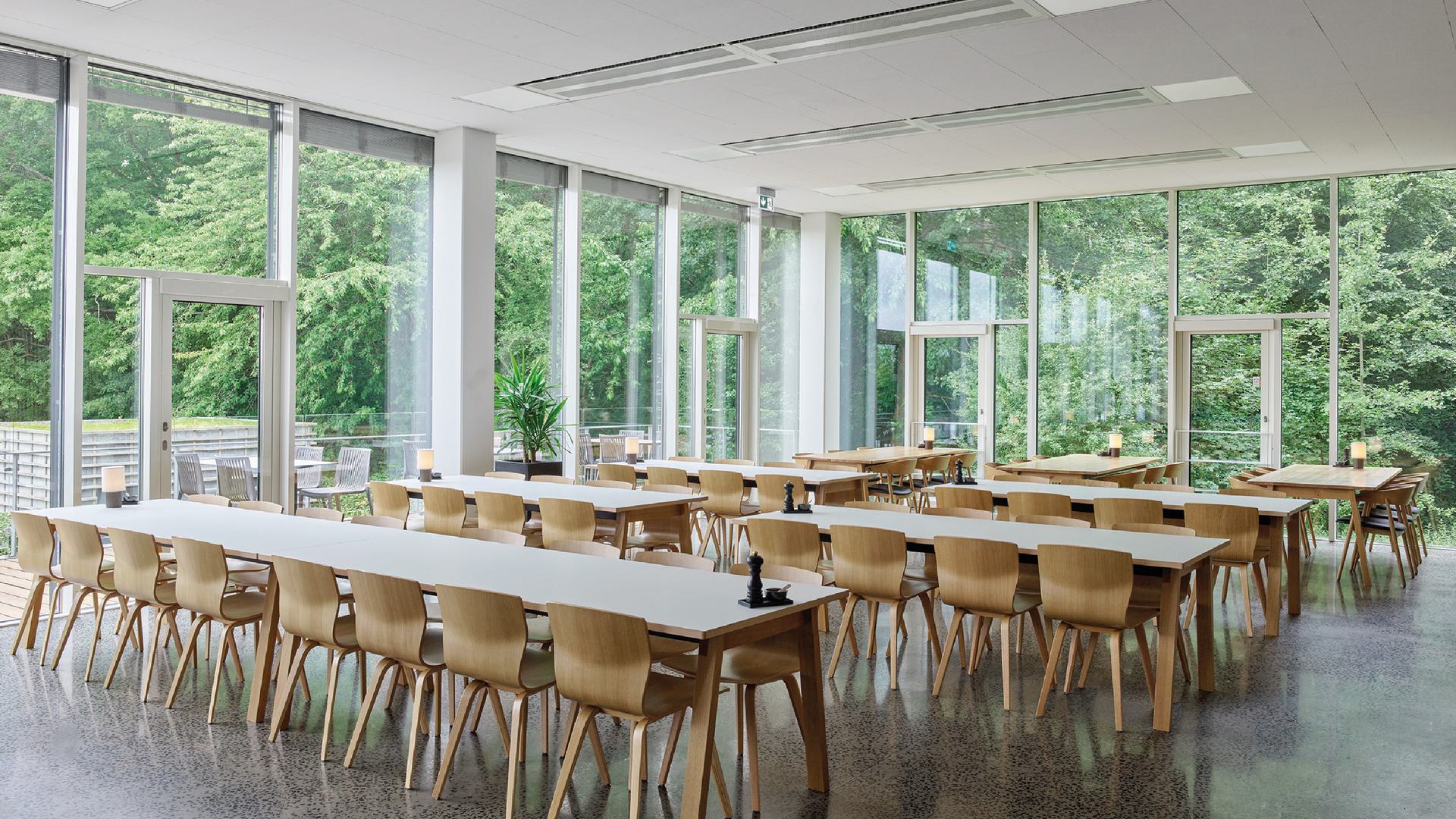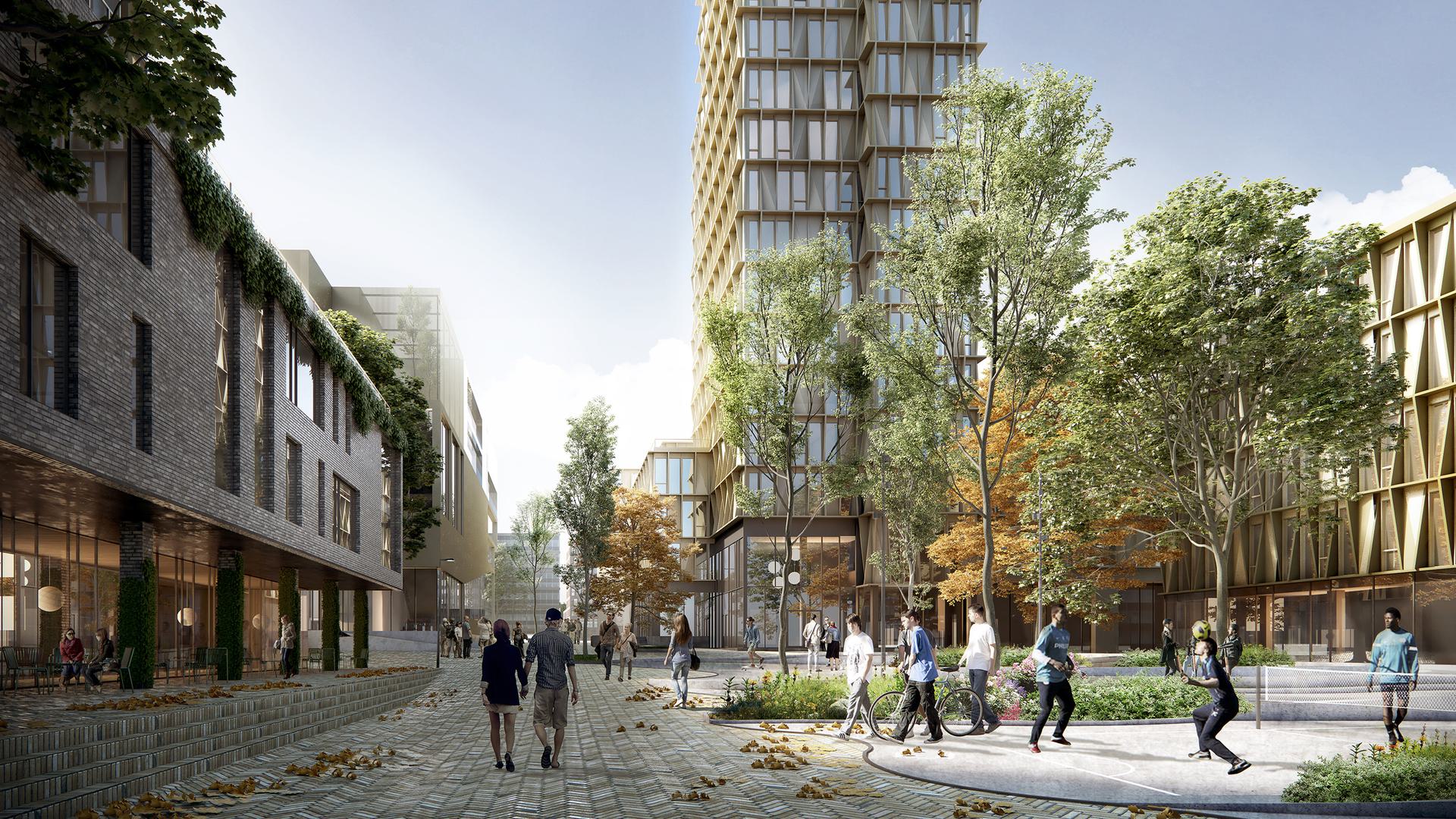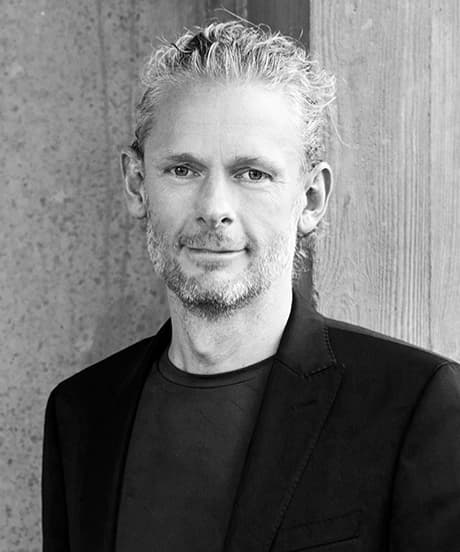
Ny Rosborg
A beacon for resilient urban development
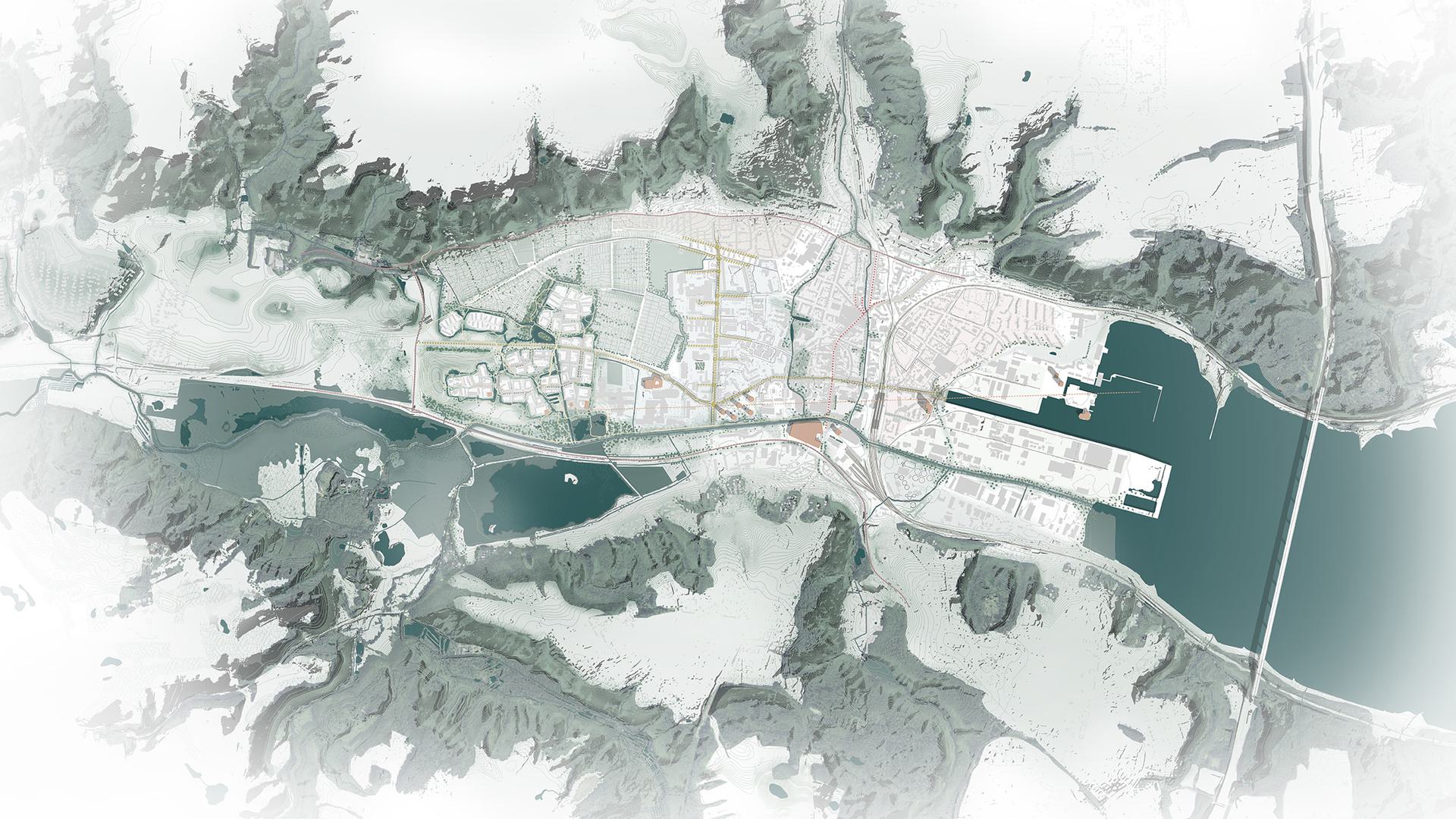
West of Vejle, Denmark, Ny Rosborg is emerging as a resilient district which not only connects the city to the river valley but also transforms the city’s former landfill into a diverse and climate-adapted residential area.
At the vanguard of a global movement
Ny Rosborg represents the fulfilment of Vejle’s vision to create a diverse and climate-adapted city in which people can live in close proximity to the city centre and river valley. The development plan builds on Vejle’s urban and geographical DNA while also supporting the city’s lofty climate ambitions in connection with its membership in the global ‘100 Resilient Cities’ network. The new district has therefore been envisaged as a type of laboratory in which the climate challenges of the future can be explored and demonstrated at eye level with the district’s residents and visitors, putting Vejle on the world map as a beacon for resilient urban development.
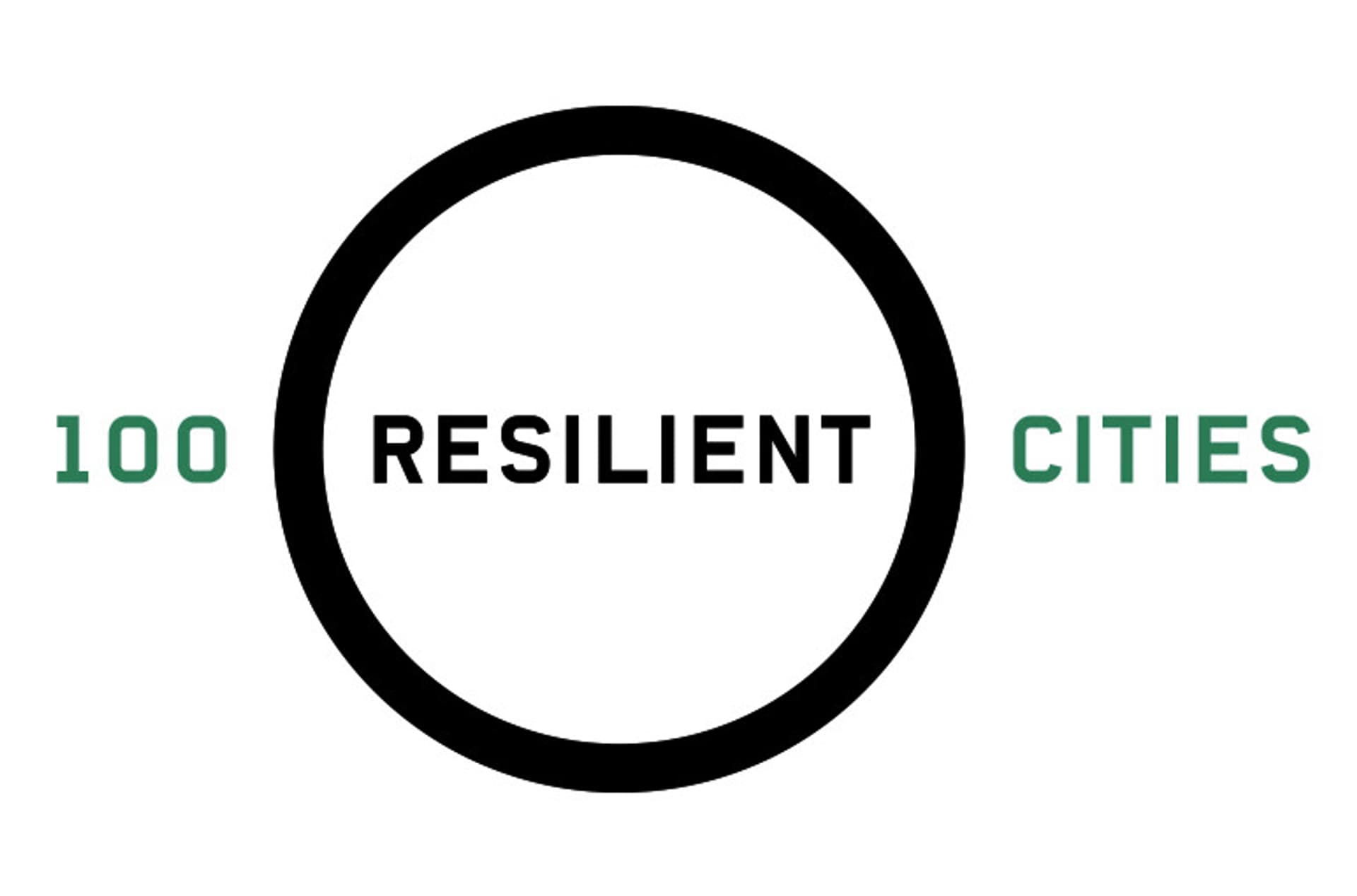
Built on islets
Ny Rosborg brings the city into close contact with its surrounding nature with a climate-conscious concept. This is achieved by drawing the river valley into the city and allowing the blue-green nature to enclose the seven islets that make up the neighbourhoods of the new district. All the neighbourhoods are situated in direct proximity to nature while maintaining their own distinctive character, with mixed types of residential buildings and a variety of communities. Additionally, the islets are raised above ground-level as a safeguard against torrential rain and rising water levels. This is because Vejle is particularly vulnerable to flooding, and accordingly the blue-green landscape between the islets have been conceptualised as a recreational rainwater reservoir, where the water becomes an asset for the district’s residents and visitors.

Large-scale recycling
Ny Rosborg is not only representative of large-scale urban development, but also large-scale recycling. This is because the development plan envisages the creation of seven islets through a strategic handling of Vejle’s surplus soil over a number of years, forming the basis for the land development of each islet. Large parts of the new district will also be based on recycling the city’s former landfill. In other words, parts of the district will be built on polluted soil, made possible be reusing surplus soil from other urban development projects and - based on a resilient approach - work experimentally with handling soil pollution so that the former landfill can be transformed into a recreational district.
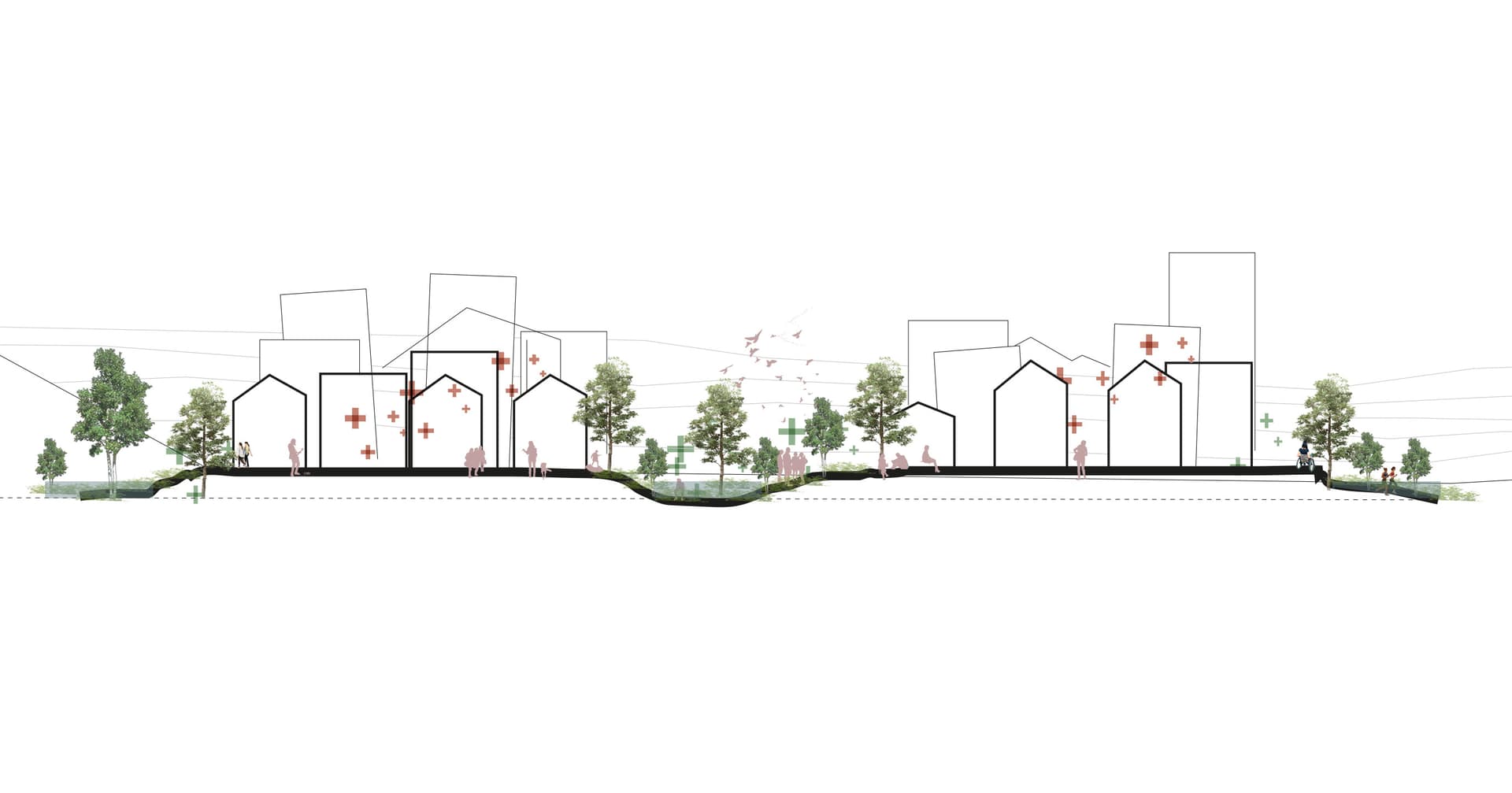
A robust development plan
Ny Rosborg is based on a robust development plan, which makes it possible to develop the district in stages, starting from islets closest to the city and ending with the islets that will be located further out in the river valley. In so doing, it becomes possible to develop the district in line with the need for housing, while also allowing experiences from a completed stage to help facilitate the undertaking of future stages. In that way, the development plan has been devised with resilient, adaptable structure in mind, which provides space to experiment and allow new knowledge to be utilised while also allowing adjustments to be made to the plan as the process moves forward.
Want to know more?



